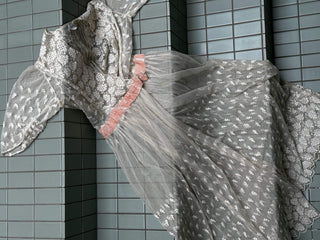As seasoned purveyors of vintage clothing, we frequently encounter the terms "used," "vintage," and "antique" being used interchangeably. These terms have their own specific meanings in the resale community, so let's delve into the distinctions, starting with the broad category of used clothing.
Used Clothing
Used clothing (also known as secondhand, pre-owned or worn clothing), encompasses a broad spectrum, encapsulating any pre-owned or worn items. From everyday wear to high-end designer pieces, this umbrella term serves as the foundation for both vintage and antique classifications.
It's essential to note that while vintage and antique items are used, not every used item earns the title of vintage or antique. "Vintage" and "Antique" are terms that refer to the age of a used garment. Items from the current year to up to 19 years old are simply referred to as used.
Vintage Clothing
The term "vintage" traces its roots to the French word meaning "past its time." Over the decades of dealing with vintage clothing, we've witnessed an intriguing evolution in its definition. Traditionally, a stringent 20-year rule was upheld, classifying anything between 20 and 100 years old as vintage—yes, that means the early 2000s now fall under this category of vintage.
This 20+ year designation was cemented in the early 2000s with the rise of online platforms like eBay and Etsy, where a firm line was drawn, cementing this strict perception of vintage. The past decade has seen some ambiguity creep into the term. Now, the qualification for vintage seems more fluid, extending the term to things closer to 10 or 15 years, much more recent than the strict 20-year cutoff.
Furniture dealers have a stricter designation, considering 40-100 years vintage. We are interested to see how this new generation of dealers challenges the rule around this term.
Antique Clothing
Antique clothing is a category reserved for items aged over a century, boasting both historical and collector's value. Anything over 100 years old can be considered an antique. Unlike the rigid definition in the antique furniture realm, antique clothing allows for a broader interpretation, with many considering garments from the 1920s and earlier as antique.
The Evolution of Language
Language, much like fashion, undergoes constant evolution with shifting trends and cultural currents. While the label "vintage" extending to 2000s fashion might cause some of us to raise an eyebrow, it brings a fresh wave of enthusiasts into the vintage fold. However, this evolution challenges the traditional narrative, especially when fast fashion is categorized as vintage.
We grapple with the changing landscape, recognizing that the unbeatable quality once synonymous with vintage loses its distinction as fast fashion infiltrates the vintage realm. Our commitment extends to curating pieces with an eye on the future—items not quite 20 years old but crafted to endure for decades, aptly termed "future vintage." In embracing this concept, we invest in pieces that age gracefully, confident that enduring quality will always remain in style.

